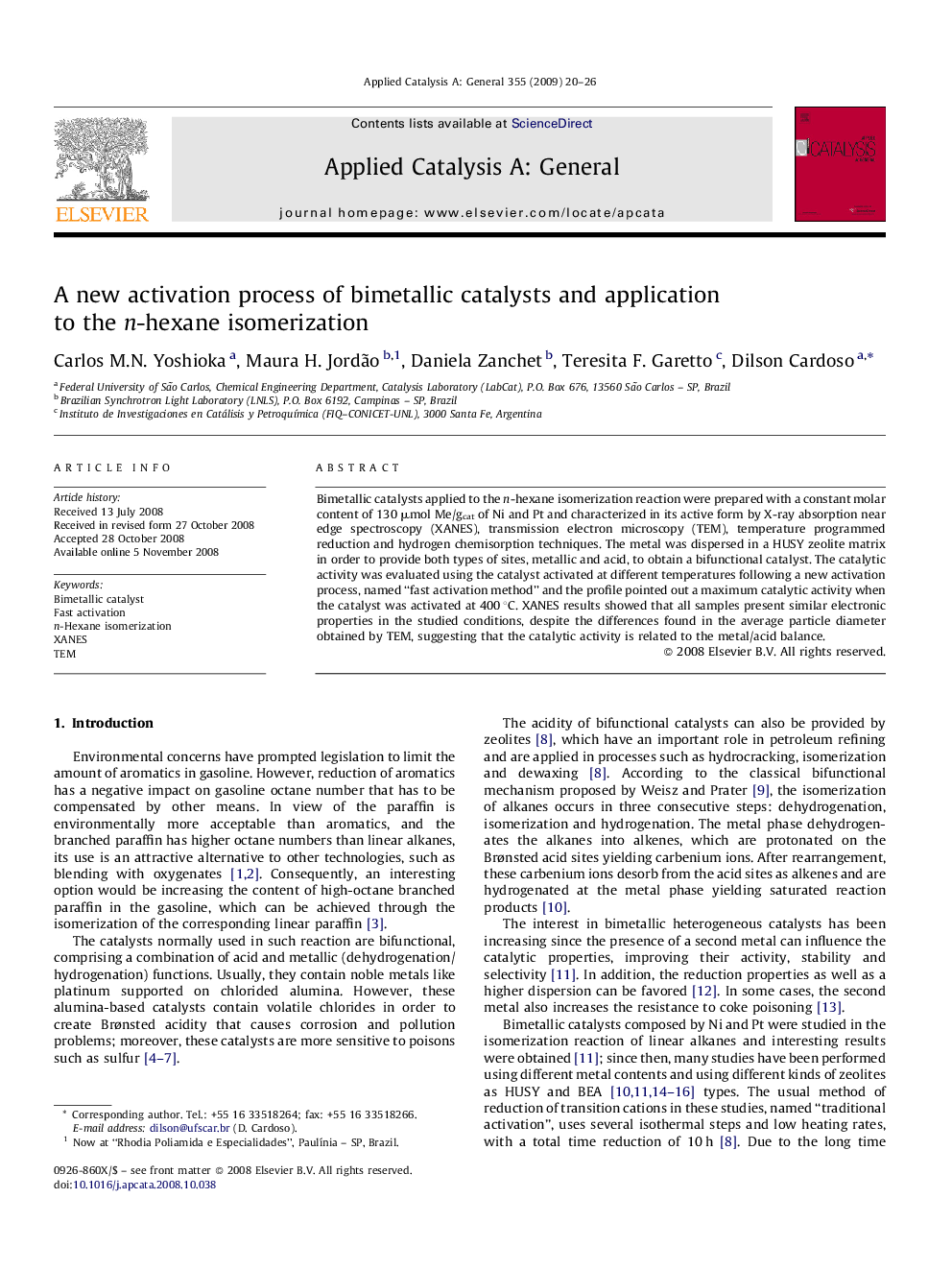| Article ID | Journal | Published Year | Pages | File Type |
|---|---|---|---|---|
| 42709 | Applied Catalysis A: General | 2009 | 7 Pages |
Bimetallic catalysts applied to the n-hexane isomerization reaction were prepared with a constant molar content of 130 μmol Me/gcat of Ni and Pt and characterized in its active form by X-ray absorption near edge spectroscopy (XANES), transmission electron microscopy (TEM), temperature programmed reduction and hydrogen chemisorption techniques. The metal was dispersed in a HUSY zeolite matrix in order to provide both types of sites, metallic and acid, to obtain a bifunctional catalyst. The catalytic activity was evaluated using the catalyst activated at different temperatures following a new activation process, named “fast activation method” and the profile pointed out a maximum catalytic activity when the catalyst was activated at 400 °C. XANES results showed that all samples present similar electronic properties in the studied conditions, despite the differences found in the average particle diameter obtained by TEM, suggesting that the catalytic activity is related to the metal/acid balance.
Graphical abstractBimetallic catalysts applied to the n-hexane isomerization reaction containing Ni and Pt were characterized by X-ray absorption near edge spectroscopy (XANES), transmission electron microscopy (TEM), temperature programmed reduction (TPR) and chemisorption. The metal sites were dispersed in a HUSY zeolite with metallic and acids. The activity was performed using the catalyst activated in different temperatures following a new activation process, named “fast activation method” and the behavior showed maximum catalytic activity at 400 °C activation temperature.Figure optionsDownload full-size imageDownload as PowerPoint slide
